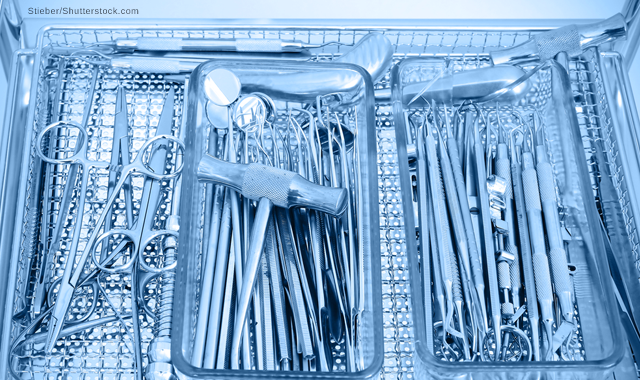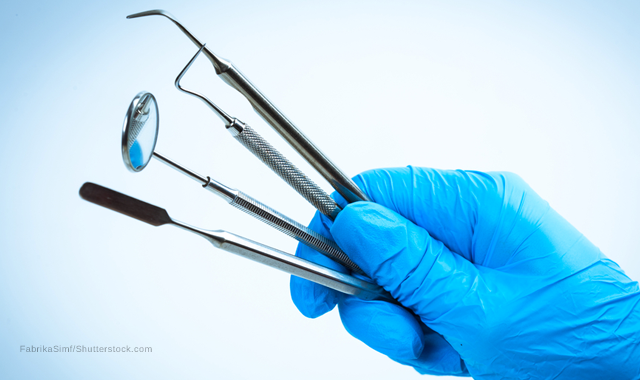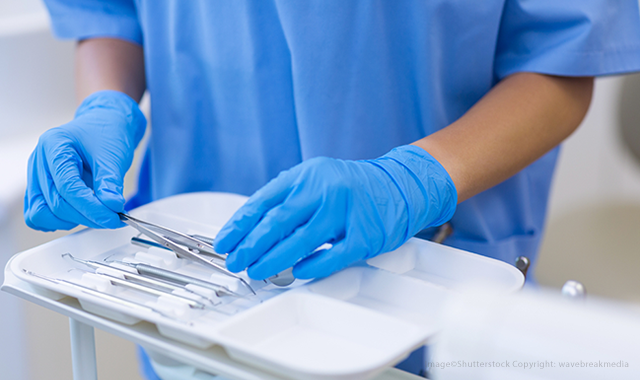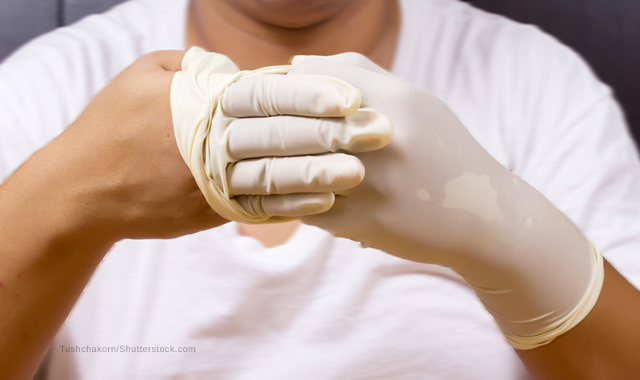5 dos and don'ts of sterilization in the dental practice
Instrument sterilization isn’t necessarily difficult, but it does require attention to detail. Here’s what you need to know.
The concept of “clean” means something different in healthcare settings than it does to the general populace. For dental practices, being clean means, “Reducing the numbers of microorganisms to minimize the risk of transmission from the environment or healthcare personnel” and is as simple as washing one’s hands. The next level is “sterile,” which means removing ALL microorganisms.

Naturally, instruments in the dental practice should be sterilized to prevent the spread of infection. To ensure that instruments are properly sterilized, there are some good dos and don’ts that every practice should be cognizant of.
Read more: 5 surefire ways to get an OSHA inspection
Click through the slides to find out the five dos and don'ts of sterilization.


Instruments
Not every instrument in the dental practice must be sterilized. Whether or not it requires sterilization depends on how it’s used.
According to the Centers for Disease Control and Prevention’s “Guideline for Disinfection and Sterilization in Healthcare Facilities, 2008,” “The American Dental Association recommends that surgical and other instruments that normally penetrate soft tissue or bone be classified as critical devices that should be sterilized after each use or discarded. Instruments not intended to penetrate oral soft tissues or bone but that could contact oral tissues are classified as semi-critical, but sterilization after each use is recommended if the instruments are heat-tolerant. If a semi-critical item is heat–sensitive, it should, at a minimum, be processed with high-level disinfection.”
More from the author: Is your practice safe?
While only the dental handpiece attachments penetrate soft tissue or bone, the entire handpiece unit must be sterilized.
“Handpieces can be contaminated internally with patient material and should be heat sterilized after each patient,” the standard reads. “Handpieces that cannot be heat sterilized should not be used.”
The standard recognizes several different means of sterilization, and the method to be used is based on the instrument and which material it’s made of.
“Methods of sterilization that can be used for critical or semi-critical dental instruments and materials that are heat-stable include steam under pressure (autoclave), chemical (formaldehyde) vapor and dry heat,” the standard states. “Dental professionals most commonly use the steam sterilizer. All three sterilization procedures can damage some dental instruments, including steam-sterilized handpieces. Heat-tolerant alternatives are available for most clinical dental applications and are preferred.”



Standards
There are sundry organizations that offer standards - if not outright regulations - governing disinfection in the dental practice. The CDC establishes disinfection guidelines that the dental practice must follow if the state in which it practices requires it. On the other hand, the Association for the Advancement of Medical Instrumentation (AAMI) establishes a set of standards that, while not required, is helpful for dental practices to understand.
“They set standards for a whole variety of medical instruments,” says Kathy Eklund, RDH, director of occupational health and safety at The Forsyth Institute. “They have a standard for steam sterilization: ST79 for Steam Sterilization. It’s a very useful document, from beginning to end, for what basically would be considered best practices. It’s designed for manufacturers, but there’s a lot that practitioners could learn from ST79.”
Trending article: 10 ways to simplify pediatric dentistry
The standard is somewhat dynamic and updated from time to time. It does cost $400 ($350 for AAMI members), and while it’s not required reading, it’s still helpful to occasionally revisit. On the other hand, the CDC’s guidelines must be followed. The organization established the core guidelines in 2003, and in 2016 it published another document to help make the guidelines more accessible.
“The CDC’s ‘Guidelines for Infection Control in Dental Health-Care Settings – 2003’ is the standard guideline and recommendations for dental healthcare settings,” Eklund says. “In 2016, the CDC published the ‘Summary of Infection Prevention Practices in Dental Settings,’ which really isn’t a new guideline but a guide of basic infection prevention recommendations for all dental healthcare settings. This CDC document can be used to facilitate compliance with the 2003 recommendations. If you’re in a state that actually regulates compliance with the CDC guidelines, then it gives you a good starting point on what should be done. The summary includes a two-part checklist to assess site specific compliance with the 2003 recommendations.”



Logging
Instrument sterilization isn’t necessarily difficult, but it does require attention to detail. A detail that can help the practice track and monitor its instrument processing is logging each cycle of sterilization.
“The sterilization load log is a quality assurance tool to document every load of sterilization,’” Eklund explains. “Log load documentation includes the date, the sterilizer, the cycle number for that date and sterilizer, the types of items in the load (i.e. dental instrumentation), identification of a biologic monitoring load, chemical indicators checked upon removal, etc.
Related reading: 10 MAJOR infection control risks
“Logging is not required or regulated in most private practices but may be required in other settings,” she continues. “Facilities such as a health center, hospital or a dental school accredited by the Joint Commission for healthcare accreditation may be required to keep load logs of every sterilization load, and that is standard practice in a hospital or surgical center as well. The idea being: You need to load it and you need to label the packages with the date, which load and other information you would put on the packages as well.”
While a load log may not be required in every practice, it’s still a good practice.
“The internal chemical indicators are extremely important.” Eklund says. “The internal chemical indicator inside each package of instruments should be checked upon removal from the sterilizer, if visible through the packaging material. The internal chemical indicator should again be checked when the packaged items are opened at chairside. If the internal chemical indicator has not changed, the items should be repackaged and resterilized. If you have multiple packages from a single sterilizer, where the internal indicators have not changed, it could be a problem with overloading the sterilizer and the steam heat has not been able to penetrate the packaging material. It may also indicate a malfunctioning sterilizer. The reason for labeling the packages is that so if you do have a sterilization failure, you have a biological monitoring failure, you can go back in the inventory and you can retrieve all of the items in inventory to the last past biological monitoring load.”



Training
A challenge with infection control is ensuring that everyone in the practice is on the same page with his or her methods. Establishing a standard way of processing instruments is important because it helps guarantee consistency throughout the practice.
“One of the challenges in many dental office settings is that they may have multiple people processing instruments,” Eklund says. “The dental hygienist and the dental assistant usually are responsible for instrument processing. It probably is not common to have a certified central sterilization technician in a dental practice setting, but the idea of having well-trained individuals who have an in-depth understanding of instrument processing and sterility assurance for medical/dental instrumentation is extremely important.”
More from the author: 4 things you need to do before expanding your practice
While achieving the end result set out in various standards is the goal, everyone in the practice should do it the same way. It becomes even more difficult when more than one person is responsible for instrument processing.
“It does, sometimes, become a challenge when multiple people are going in and out of a sterilization area to ensure everyone is following standardized practices,” Eklund says. “Ensuring that you have an effective and efficient sterility assurance program, including adequate documentation and well-trained personnel, is extremely important.”



Personal protective equipment
Personal protective equipment (PPE) isn’t just essential when working with patients. It’s necessary when processing instruments too, for each team member’s safety as well as ensuring instruments’ overall sterility.
“Staff should have proper personal protective equipment when processing instruments, including protective eyewear, barrier attire, a face mask and appropriate gloves.” Eklund says. “Heavy duty utility gloves should be worn for pick-up transport, cleaning and packaging contaminated sharps. This is one area where compliance is a challenge.
Some settings may be even more strict when it comes to PPE, especially when the instruments’ sterility is concerned.
Trending article: The true science fiction of future dentistry
“Some facilities require hairnets and booties to be worn in the sterilization area,” Eklund says. “But minimal personal protective equipment, including protective eyewear, barrier attire, a face mask and heavy duty, puncture-resistant gloves, is necessary to protect staff from contamination and injury.”
Instrument sterility is critical for patient safety. And while there are standards and procedures that are required, there are other best practices that can help protect patients from harm.

Maximizing Value: The Hidden Benefits of Preventing Hospital-Acquired Pneumonia Through Oral Hygiene
September 10th 2024Originally posted on Infection Control Today. Hospital-acquired pneumonia (HAP) is a significant infection prevention concern, leading to high patient mortality, increased health care costs, and ICU usage. Oral hygiene is an effective preventive measure.